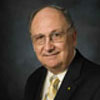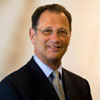Aired on 10/2/2014
Often overlooked in the dialogue about how to combat climate change, yet vital to this discussion, are the metrics used for climate accounting. Relevant for the discussions at the Conference in Paris of the Parties to the UN Framework Convention on Climate Change, these climate metrics lie at the heart of treaty negotiations, government policies, carbon registries, and corporate goal-setting. They are the basis for evaluating how billions of dollars are invested for carbon offsets and mitigation efforts.
The climate metrics currently in use worldwide date back to the Kyoto Protocol of 1997. However, while climate science has progressed significantly since that time, the climate metrics have stood still. We now know much more about the contribution of short-lived climate forcers such as black carbon, the role of climate coolants, the importance of regional hotspots such as the Arctic, and oncoming temperature tipping points.
Presenters bring viewers up-to-speed on the latest climate science, explaining the limits of current climate accounting methods, then describe how new, updated climate metrics can not only overcome these hurdles, but also provide new insights into the identification of effective climate mitigation solutions.
Click here for the Webinar_New Climate Metrics Slide
New Climate Metrics: The Case for New Climate Change Metrics
by ARTURO HERRERA on OCTOBER 6, 2014
Share
Often overlooked in the dialogue about how to combat climate change, yet vital to this discussion, are the metrics used for climate accounting. Relevant for the discussions at the Conference in Paris of the Parties to the UN Framework Convention on Climate Change, these climate metrics lie at the heart of treaty negotiations, government policies, carbon registries, and corporate goal-setting. They are the basis for evaluating how billions of dollars are invested for carbon offsets and mitigation efforts.
The climate metrics currently in use worldwide date back to the Kyoto Protocol of 1997. However, while climate science has progressed significantly since that time, the climate metrics have stood still. We now know much more about the contribution of short-lived climate forcers such as black carbon, the role of climate coolants, the importance of regional hotspots such as the Arctic, and oncoming temperature tipping points.
Presenters bring viewers up-to-speed on the latest climate science, explaining the limits of current climate accounting methods, then describe how new, updated climate metrics can not only overcome these hurdles, but also provide new insights into the identification of effective climate mitigation solutions.
Click here for the Webinar_New Climate Metrics Slide
Panelists:

Michael MacCracken, Chief Scientist for Climate Change Programs, Climate Institute. Dr. MacCracken was on assignment as senior global change scientist to the interagency Office of the U.S. Global Change Research Program (USGCRP) in Washington D.C., also serving as its first executive director. Subsequently, he served as executive director of the USGCRP’s National Assessment Coordination Office, which coordinated the efforts of 20 regional assessment teams.

Stanley P. Rhodes, Founder and President, SCS Global Services. A Ph.D. chemist, Dr. Rhodes has provided the strategic vision and scientific insight driving SCS Global Services to become one of the world’s leading providers of third party certification and assessment services in the environmental and sustainability fields. A specialist in life cycle assessment (LCA), he has devoted 20 years to the improvement of life cycle impact assessment methods, including updated climate metrics, and is currently a US LCA expert to the international ISO-TC207 subcommittee on LCA standards (ISO 14040 series).

Bill Karsell, Chair, US Sub-Technical Advisory Group (ST5) to the International Organization for Standardization (ISO) subcommittee on Life Cycle Assessment. Mr. Karsell is also chair of the national committee developing a life cycle assessment standard under the American National Standards Institute (ANSI) process (LEO-SCS-002). Mr. Karsell served as Chief of Environmental Services with the Bureau of Reclamation, managing more than 100 scientists and engineers providing services in the areas of ecological assessment and management, water treatment engineering and research, remote sensing and geographic information, and economics. He is past-chair of the Electric Power Research Institute’s Watershed and Ecosystem Advisory Council and the Western Electricity Coordinating Council’s Environmental Committee.

Robert Howarth, the David R. Atkinson Professor of Ecology and Environmental Biology, Cornell University. Dr. Howarth has served on many national and international advisory boards, and from 2007 to 2012 chaired the International SCOPE Biofuels Project of the International Council of Science. Currently he serves on the Sustainable Land Use Panel of the United Nations Environmental Programme. Howarth is the Founding Editor of the journal “Biogeochemistry,” where he served as Editor-in-Chief from 1983 to 2004. He has published more than 200 articles and books, including the 4th edition of Essentials of Ecology published just this year. In 2011, Howarth published the first peer-reviewed analysis of how methane emissions affect the greenhouse gas footprint of shale gas.
Sponsors for this webinar include Nalgep, The Nature Generation, and Island Press.
